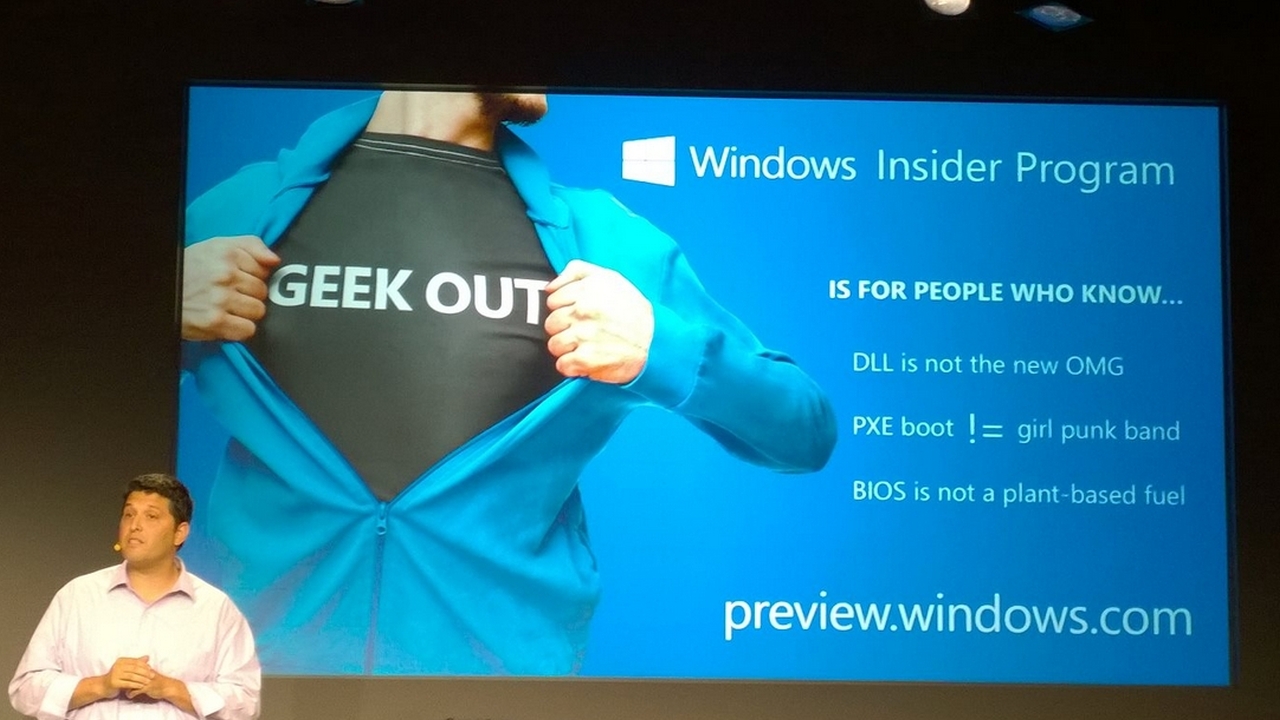Windows 10: Get the answers to the your questions

The Windows 10 launch event concentrated on the enterprise audience Microsoft wants to win over to the next release of its operating system and in particular on the desktop tools and shortcuts the Windows team has designed for those productivity users.
But it also gave us a chance to talk to members of the Windows team from Terry Myerson and Joe Belfiore to the product managers who look after features like the taskbar to technical experts like Dave Treadwell (a long-time developer on the Windows team who's now a corporate vice president).
In between talking up the Windows Insider program, they told us about how Windows 10 will stay fresh, what's happening to Internet Explorer, the different ways universal applications can work across devices and what the deal is with Microsoft's research OS programs.
What does having the same Windows on PCs and phones and Xbox and Internet of Things sensors really mean? How far is it really the same?
Dave Treadwell explained that at one level, it's all one Windows already; "having a common kernel is something we've been embracing for years; Xbox One has the same kernel as Windows and Windows Phone. We've been carefully expanding that and now the idea of a Universal App provides a common developer platform across different devices." But a universal app isn't exactly the same everywhere either, because "you use these devices differently. Your interface to a phone is a little different to a laptop where you have a keyboard and a mouse so it's not one interface to rule them all, it's a family of products. We also have the ability to tailor experience to the different devices; you can use shape writing on a phone, you can use a pen on a tablet, I can open my laptop and type into it. The more of the experience is tailored to the device. It's not appropriate to have the exact same interface across all devices because it doesn't fit well."
And that idea of a continuum of Windows across different devices goes down to the features and the programming interfaces, Treadwell explained to TechRadar. "Some things like how you access the file system are exactly the same across all the different devices, but again, that doesn't mean you'll have the same user interface for doing that. We have two techniques we use; they're called adaptive and tailored. With adaptive, the interface is automatically scaled to the device; when you move the Mail app in Windows 10 back and forth, that's written for all the different sizes of the application. A tailored app is one where the developer has thought specifically, 'hey, I'm going to do something different on a mouse and keyboard, than I'll do on a tablet, than I'll do on a games console." On a tailored app, there's active thought by the developer to make sure their experience works very well on the devices they're targeting. It goes down to the hardware; they can know whether there's a Kinect attached to the machine, and say 'if there is a Kinect, provide this kind of experience'."
Is Windows 10 going to be around for as long as Windows 7 or XP? How is it going to stay fresh and up to date?
Sign up for breaking news, reviews, opinion, top tech deals, and more.
There's a tension between keeping Windows up to date and keeping Windows stable, Terry Myerson told us, because of the wide range of devices it runs on, from tiny sensors to servers – to the machines that control factory lines for companies (including Apple, ironically). "There are these different personas; there are these different devices in the Windows world. One of the things we offer for enterprise is a mission critical level of support and when mission-critical system have been built using Windows 10 Microsoft will support them for a long time. We have ways of supporting our products for well north of ten years for enterprise customers; they expect that. If you're going to build a factory floor and put a system on there, you want to know how that system will work and you want it to stay that way so that factory floor works. But there is this tension; there are a lot of productivity workers - like myself – and we are in some ways consumerised. We want an experience that's fresh and always up to date.
Mary (Twitter, Google+, website) started her career at Future Publishing, saw the AOL meltdown first hand the first time around when she ran the AOL UK computing channel, and she's been a freelance tech writer for over a decade. She's used every version of Windows and Office released, and every smartphone too, but she's still looking for the perfect tablet. Yes, she really does have USB earrings.